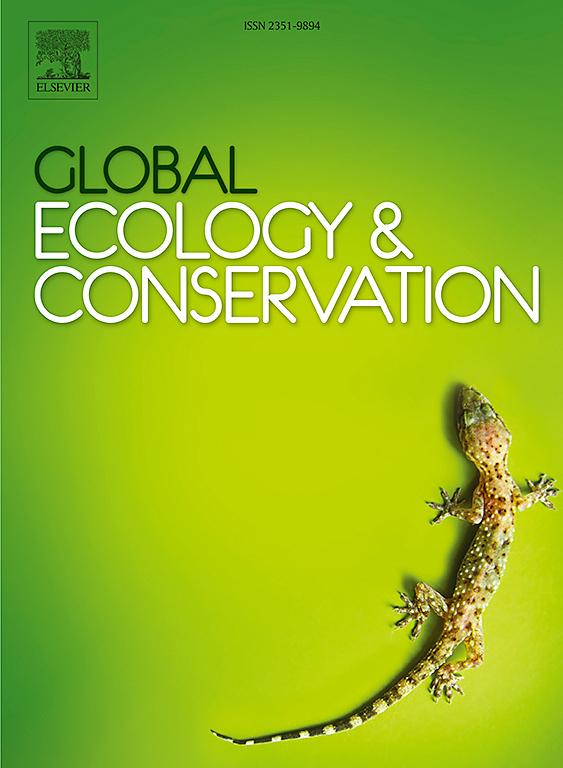Distribution of African savanna elephants (Loxodonta africana), African forest elephants (L. cyclotis), and their hybrids across Africa based on genetic evidence
IF 3.5
2区 环境科学与生态学
Q1 BIODIVERSITY CONSERVATION
引用次数: 0
Abstract
It has recently been recognized that African forest and savanna elephants represent separate species. We analyzed 2445 known-origin elephant samples from across Africa for presence of the two species and hybrids between them, and augmented this with hybrid detection in 4883 samples from ivory seized as contraband. Hybrids were rare overall (6.6 % of reference samples, 1.5 % of contraband samples), occurring only in areas in or near forest-savanna ecotones. Of our known-location hybrids, 117/167 (70 %) were in the Albertine Rift major hybrid zone in eastern DRC and southwestern Uganda, confirming previous reports; in some Albertine sites hybrids outnumbered pure species. Hybrids inferred to be F1 (the product of a forest/savanna mating) were particularly rare, with only 4 found in reference samples and 5 in contraband, suggesting that most hybridization occurred two or more generations ago. We discuss the distribution of the two African elephant species and their hybrids, forces driving hybridization, implications for conservation and management, and areas that need additional sampling effort.
基于遗传证据的非洲草原象(Loxodonta africana)、非洲森林象(L. cyclotis)及其杂交后代在非洲的分布
最近人们认识到,非洲森林象和热带草原象是不同的物种。我们分析了来自非洲各地的2445个已知来源的大象样本,以确定这两个物种及其杂交后代的存在,并在4883个象牙走私品样本中进行了杂交检测。杂交种总体上是罕见的(6.6 %的参考样本,1.5 %的违禁样本),只发生在森林-稀树草原交错带或附近地区。在我们已知位置的杂交种中,117/167(70 %)位于刚果民主共和国东部和乌干达西南部的Albertine裂谷主要杂交带,证实了之前的报告;在艾伯丁的一些地方,杂交种的数量超过纯种。被推断为F1(森林/稀树草原交配的产物)的杂种尤其罕见,在参考样本中只发现了4只,在违禁样本中发现了5只,这表明大多数杂交发生在两代或更早之前。我们讨论了两个非洲象物种及其杂交的分布,杂交的驱动力,对保护和管理的影响,以及需要额外采样努力的领域。
本文章由计算机程序翻译,如有差异,请以英文原文为准。
求助全文
约1分钟内获得全文
求助全文
来源期刊

Global Ecology and Conservation
Agricultural and Biological Sciences-Ecology, Evolution, Behavior and Systematics
CiteScore
8.10
自引率
5.00%
发文量
346
审稿时长
83 days
期刊介绍:
Global Ecology and Conservation is a peer-reviewed, open-access journal covering all sub-disciplines of ecological and conservation science: from theory to practice, from molecules to ecosystems, from regional to global. The fields covered include: organismal, population, community, and ecosystem ecology; physiological, evolutionary, and behavioral ecology; and conservation science.
 求助内容:
求助内容: 应助结果提醒方式:
应助结果提醒方式:


